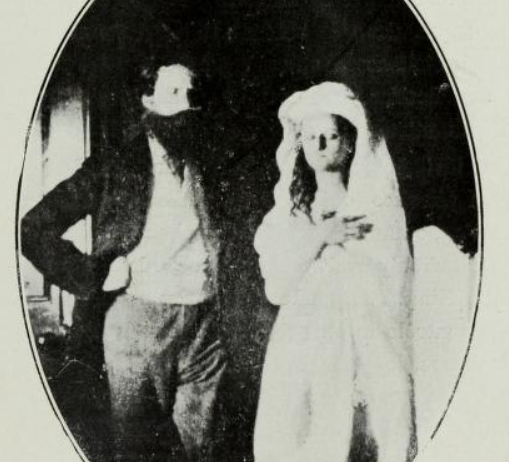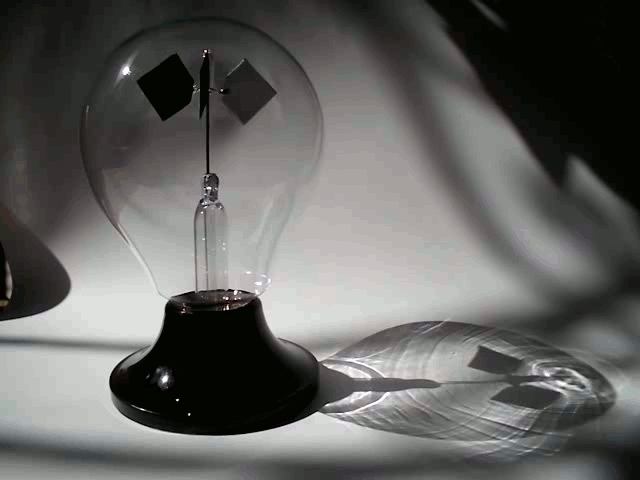William Crookes is recognised today as one of the great scientists of the Victorian era. He left his mark above all with his invention of the cathode ray tube and the discovery of a chemical element, thallium. But he was also the inventor of modern sunglasses (with a 100% ultraviolet filter) and ingenious devices to see the disintegration of radioactive atoms or to detect the intensity of electromagnetic radiation.
He also founded and edited scientific journals and became president of the Royal Society, the oldest scientific society in the world. Much less well known, however, is his ambiguous relationship with the world of spiritualism and the paranormal, a dark period in his life to which he devoted four years, and which almost ended his scientific career and ruined his reputation.
From discovering an element to investigate mediums
William Crookes (June 17, 1832 – April 4, 1919) always opted for going it alone. The son of a wealthy tailor, he inherited a considerable fortune from his father and at the age of 24 he decided to set up a private laboratory and establish himself as an independent advisor, consultant and scientific researcher. Just three years later, Crookes discovered thallium and successfully determined its chemical properties, an achievement that immediately established him as one of the up-and-coming chemists of the time, as evidenced by the fact that in 1863, at the age of just 31, he was elected to the distinguished Royal Society. Everything suggested that a dazzling career awaited him.

But then, in 1867, something happened. The death of Phillip, the youngest and dearest of his fifteen siblings, plunged Crookes into a tremendous sadness and depression from which his friends tried to rescue him. Among them was Cromwell Varley, a former classmate, who convinced William and his wife to attend a session with a medium to try to communicate with the absent brother. In Victorian England spiritualism or spiritism was in full swing, to the point of having become a sort of alternative religion with a multitude of followers in all social classes, so Varley’s suggestion would not have sounded ridiculous.
The Crookes couple attended a series of sessions that must have had a profound impact on William, because from that moment on he decided to devote himself to the investigation of the paranormal. His plan was to maintain a position of permanent scepticism and rigorously follow the scientific method he knew so well by conducting a series of experiments under controlled conditions (for which he specifically designed and built a room), which would allow objective measurements to be made beyond what the senses could be made to believe, and always to do so in the presence of witnesses of maximum reliability and from the field of science. And he also proposed to face this study without preconceived ideas, prejudices or perspectives.

Thus he examined several alleged mediums and unmasked frauds, but he also gave credibility to a few, such as the famous spiritualist Daniel Douglas Hume, who successfully overcame the two initial experiments designed by Crookes to test paranormal phenomena; specifically, the ability to manipulate objects at a distance and to modify the weight of an object. The first of the experiments required the medium to sound an accordion enclosed in a drawer placed under a table, only resting his hands on the ends of it. The second was to alter the weight of a wooden board arranged on a scale by lightly resting the fingertips on the edge of the board.
Hume was able to pass both tests before the astonished eyes of Crookes and the three witnesses that accompanied him. These results led Crookes to conclude that the subject dominated some type of “psychic force” that did not fit within the known natural laws, for which her received numerous criticisms and attacks.
Tiumphant return to science
Even more scandalous was the support and patronage that Crookes offered in 1874 to Florence Cook, a 15-year-old girl through which, supposedly, a spirit named Katie King materialised. Crookes claimed to have seen the spirit and came to take numerous photographs in a vain attempt to document its existence. This case further damaged his reputation, also mixed with rumours about his intimate relationship with the adolescent medium. Overcome by events, Crookes abandoned the investigation of the paranormal from 1875. He returned to the path of orthodox science and that same year invented a radiometer, a kind of light mill whose vanes rotate in the presence of electromagnetic radiation.

In 1878, he turned his focus towards the newly discovered cathode rays in order to determine their nature. To do so, he invented the Crookes tube, with which he concluded that cathode rays were actually a jet of particles and were also negatively charged, as he found when he diverted the jet with a magnet. Shortly afterwards, these studies led to the discovery of the electron (carried out by Thomson with a Crookes tube) and X-rays.
These new achievements completely restored his prestige to the point that his earlier incursion into the paranormal was seen as an unfortunate episode. Nevertheless, Sir William Crookes maintained his link with spiritualism for the rest of his life. After his wife’s death in 1916, he tried to communicate with her in sessions with mediums. He was also a member of The Ghost Club, a paranormal research society to which Charles Dickens and Arthur Conan Doyle also belonged, and which he presided over between 1907 and 1912, just before being named president of the Royal Society in 1913.
Comments on this publication